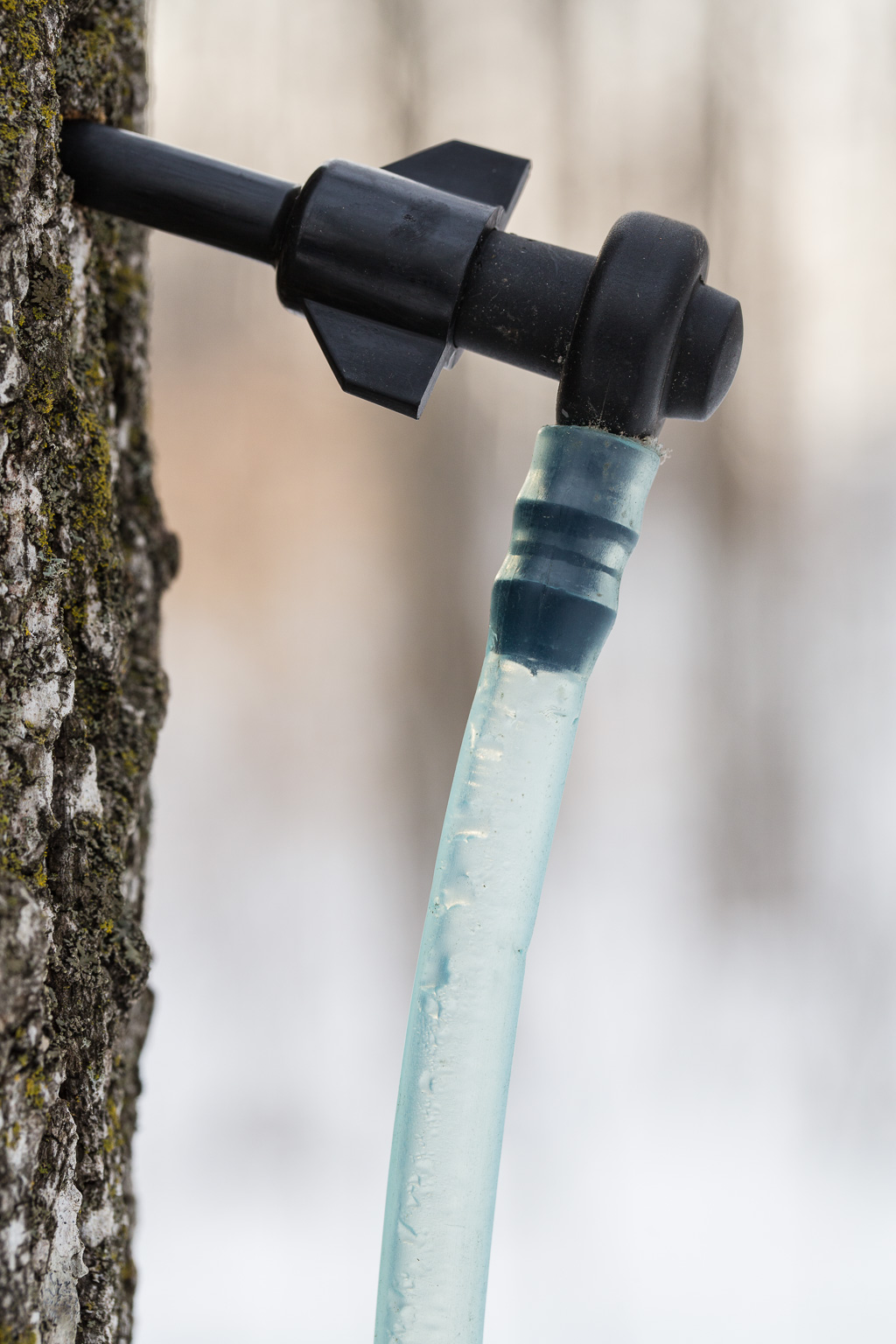I remember childhood picture books of a stereotypical Canadian winter from long ago. It was the sort of winter that maybe les habitants experienced in the olden days, or that you learned about on a school trip to Black Creek Pioneer Village. It was the sort of winter where frost bitten settlers trudged through the snow with a yoke across the back carrying two pails of sap. They would pour the sap into a cauldron and boil it down until all that remained was thimble of syrup. At a 40 to 1 ratio, it took a lot of trips back and forth with the yoke, and a lot of waiting by the boiling cauldron, before you had enough syrup to keep the family’s 15 children from clamouring for more on their breakfast flapjacks. Even today, you can go on outings where they make maple syrup the old-fashioned way.
However, if you want to make enough maple syrup to keep up with demand, you have to forego the buckets and yoke and scale up your production. That means that when you tap a tree, the sap doesn’t flow directly into a bucket. Instead, it flows into a tube which flows into a bigger tube which flows into an even bigger tube and, with a little help from gravity, it all drains into a big tank. For the health of the trees, the general rule of thumb is: one tap in a maple tree with a trunk one foot in diameter, and an additional tap for every six inches in diameter after that.
The image above shows a network of tubes running through the sugar bush at Williams Farm in Wyebridge, Ontario. Below is a macro image of a single tap. Modern production may lack the romance of les habitants, but then again modern maple syrup producers don’t lose fingers to frostbite. So there’s that.


One reply on “Tapping Trees in the Sugar Bush: Ontario Maple Syrup”
[…] a previous post, I mentioned that, at Williams Farm, syrup collection relies on a combination of gravity and vacuum […]